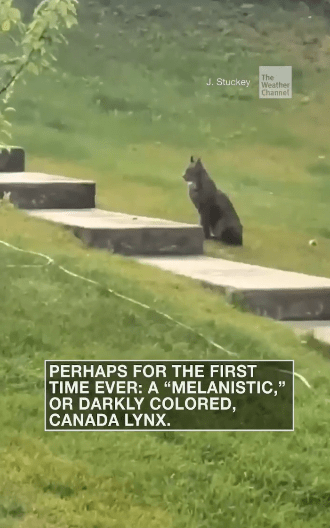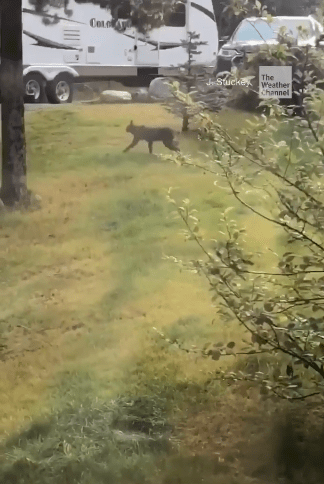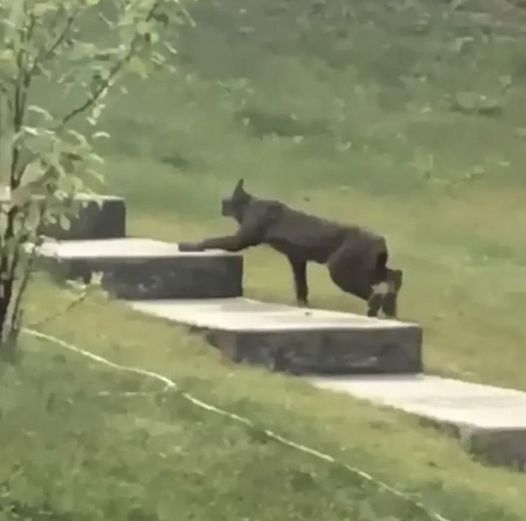Canadian scientists have made a groundbreaking discovery, capturing a rare and elusive melanistic Canada Lynx on cell phone footage for the first time ever.
In the world of Lynx Genus, coat colors are typically predictable, with Canada Lynx commonly displaying shades of gray or reddish brown. However, this unique find has shaken up the scientific community as a melanistic lynx, characterized by its dark coloration, had never been recorded before.

Photo Credit: The Weather Channel
The researchers are intrigued by this newfound specimen, but they also express concerns about its natural disadvantage in the often-snowy habitats it inhabits. Unlike its lighter-colored counterparts, the melanistic lynx may find it harder to blend in with its surroundings and maintain successful hunting strategies.

Photo Credit: The Weather Channel
Moreover, this discovery has opened up discussions on the potential link between animal melanism and climate warming. A study conducted in 2014 proposed a connection between the two phenomena, suggesting that the rising temperatures could be contributing to the emergence of darker coat colors in various animal species.
As scientists continue to study this unique lynx, the footage has become a symbol of the remarkable diversity and adaptability found in nature. The video has sparked both awe and concern, shedding light on the importance of preserving and understanding the delicate balance between wildlife and the changing environment.

Photo Credit: The Weather Channel
This unprecedented encounter with a melanistic Canada Lynx marks a significant milestone in wildlife research and conservation efforts. The researchers hope that their findings will lead to a better understanding of how climate and other factors may influence the color variations observed in various animal species.

Photo Credit: The Weather Channel
In conclusion, the remarkable footage of the melanistic Canada Lynx serves as a testament to the wonders of the natural world and the ongoing quest to unravel its mysteries. As we delve deeper into these fascinating discoveries, we are reminded of the vital role we play in safeguarding the planet’s diverse and precious wildlife for generations to come.
Sources: The Weather Channel
